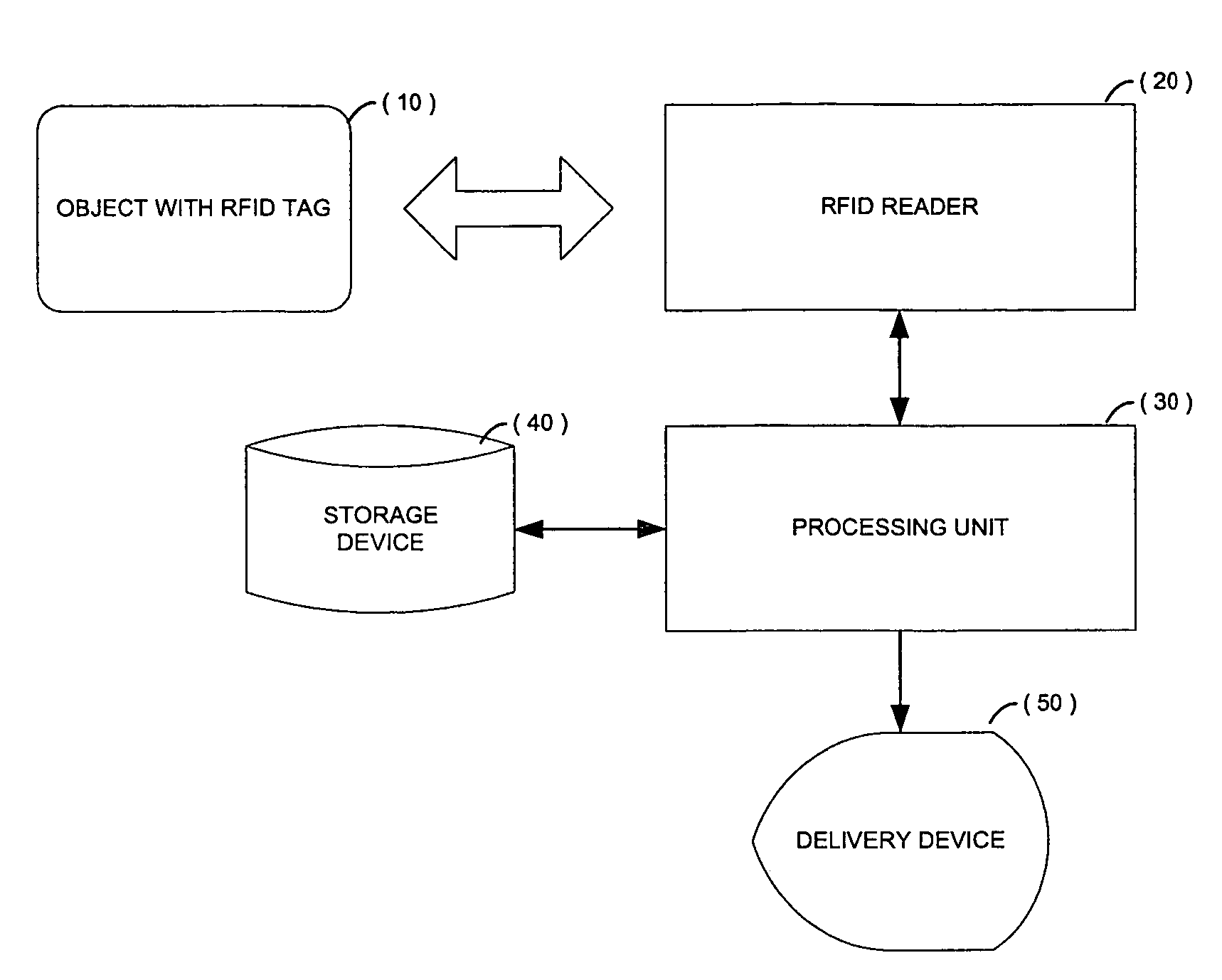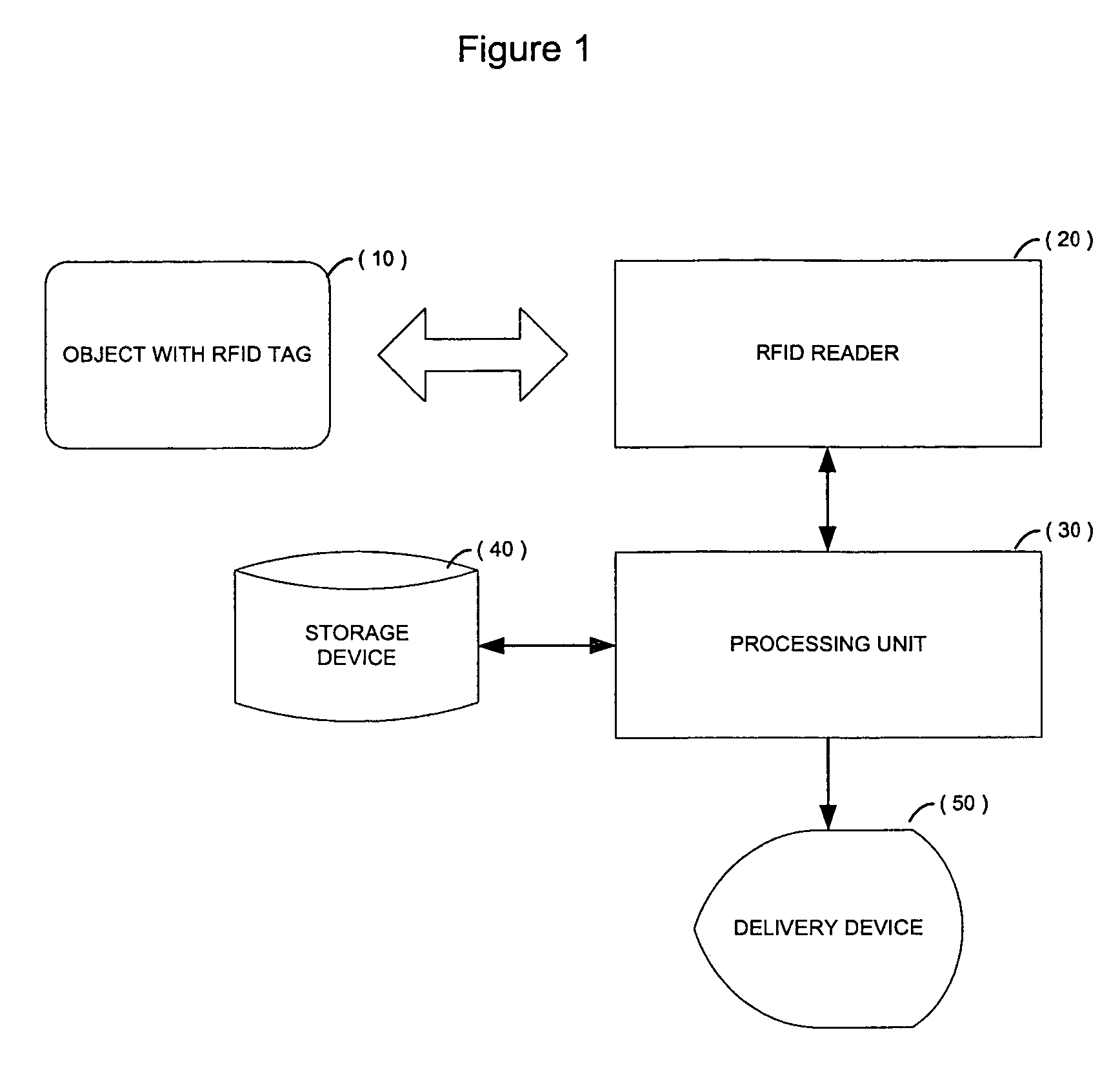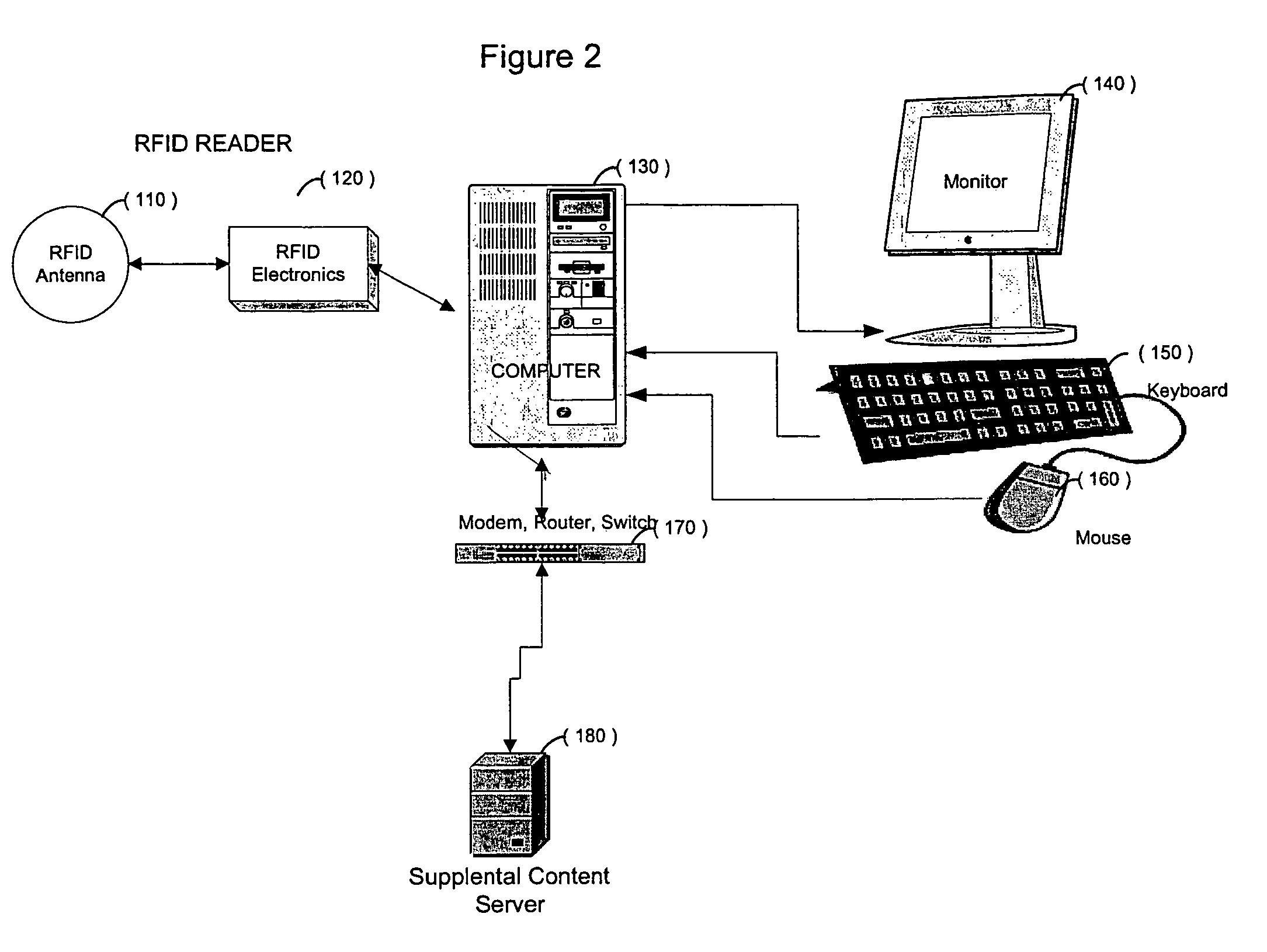Linking articles to content via RFID
a technology of linking articles and content, applied in the field of linking articles to content via rfid, can solve the problems of occupying precious desk space, affecting the publication, and affecting the publication, and achieves the effect of easy validation of the publication
- Summary
- Abstract
- Description
- Claims
- Application Information
AI Technical Summary
Benefits of technology
Problems solved by technology
Method used
Image
Examples
Embodiment Construction
[0042]In the following description, for purposes of explanation and not limitation, specific details are set forth, such as particular networks, communication systems, computers, terminals, devices, components, techniques, data and network protocols, software products and systems, enterprise applications, operating systems, enterprise technologies, middleware, development interfaces, hardware, etc. in order to provide a thorough understanding of the present invention. However, it will be apparent to one skilled in the art that the present invention may be practiced in other embodiments that depart from these specific details. Detailed descriptions of well-known RFID devices, networks, communication systems, computers, terminals, devices, components, techniques, data and network protocols, software products and systems, enterprise applications, operating systems, enterprise technologies, middleware, development interfaces, and hardware are omitted so as not to obscure the description...
PUM
 Login to View More
Login to View More Abstract
Description
Claims
Application Information
 Login to View More
Login to View More - R&D
- Intellectual Property
- Life Sciences
- Materials
- Tech Scout
- Unparalleled Data Quality
- Higher Quality Content
- 60% Fewer Hallucinations
Browse by: Latest US Patents, China's latest patents, Technical Efficacy Thesaurus, Application Domain, Technology Topic, Popular Technical Reports.
© 2025 PatSnap. All rights reserved.Legal|Privacy policy|Modern Slavery Act Transparency Statement|Sitemap|About US| Contact US: help@patsnap.com



